Status Operating Distance travelled 934 mi (1,503 km) Service frequency Daily each way First service 1 May 1971 Stops 17 | Average journey time 19 hours | |
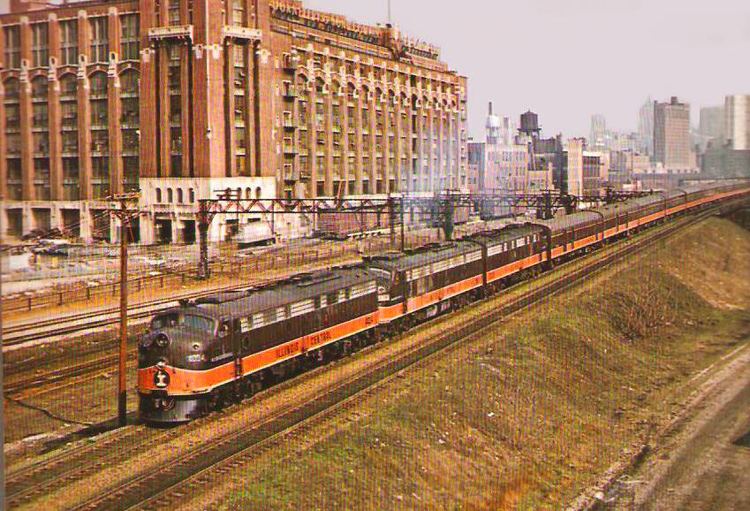 | ||
Ridership 639 daily233,318 total (FY11) | ||
The City of New Orleans is an Amtrak passenger train which operates on an overnight schedule between Chicago, Illinois, and New Orleans, Louisiana. The train is a successor to the Illinois Central Railroad's Panama Limited. The present name was revived in 1981. When the first City of New Orleans was begun by the Illinois Central Railroad in 1947, it was the longest daylight run in the United States and the daylight train under that name ran through 1971. It was sung about in the bittersweet 1971 song. Additional corridor service is provided between Chicago and Carbondale, Illinois, by the Illini and Saluki.
Contents
Illinois Central

The Illinois Central Railroad introduced the original City of New Orleans on April 27, 1947 as a daytime companion to the overnight Panama Limited. EMD E7 diesel locomotives pulled new lightweight Pullman Company coaches. The 921-mile (1,482 km) route, which the City of New Orleans covered in 15 hours 55 minutes, was the longest daytime schedule in the United States. The City of New Orleans exchanged St. Louis—New Orleans through cars at Carbondale, Illinois and Louisville—New Orleans cars at Fulton, Kentucky. The average speed of the new train was nearly 60 mph (97 km/h); a result of the largely flat route of the Illinois Central along the Mississippi River and maximum speeds of up to 100 mph (160 km/h). By October 25, 1959, the timetable had lengthened to 16 hours 30 minutes. The train remained popular throughout the 1960s and gained ex-Missouri Pacific Railroad dome coaches in 1967.
Amtrak
When Amtrak assumed operation of U.S. passenger train service on May 1, 1971, the train's Chicago—New Orleans service was initially operated as the City of New Orleans on the traditional daytime schedule. Inauspiciously, the City of New Orleans was involved in Amtrak's first fatal derailment on June 10, near Salem, Illinois. Because this train made no connections with other trains at either New Orleans or Chicago, Amtrak moved the train to an overnight schedule on November 14, 1971, and renamed it the Panama Limited.
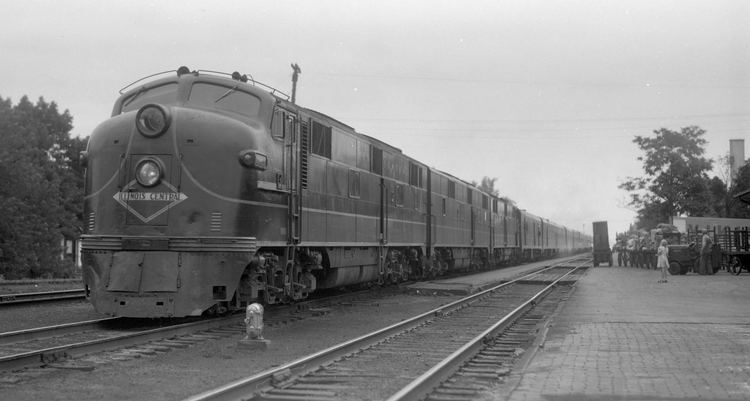
In February 1981, Amtrak restored the City of New Orleans name while retaining the overnight schedule; Amtrak hoped to capitalize on the popularity of the song written by Steve Goodman and recorded in 1972 by Arlo Guthrie. A Kansas City section began operation on April 29, 1984. Known as the River Cities, it separated at Centralia, Illinois (later Carbondale). This section ended on November 4, 1994. The northbound City of New Orleans began stopping at Gilman, Illinois, on October 26, 1986. Gilman had last seen service in 1971; the Illini stopped there as well. Service to Cairo, Illinois, south of Carbondale, ended on October 25, 1987.
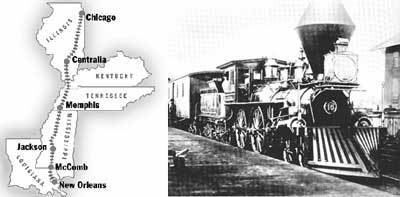
Amtrak operated the City of New Orleans reliably through the 1980s and into the 1990s; in 1992, the City of New Orleans had the highest on-time performance rate of all Amtrak services at 87%. Nevertheless, on-board service had declined; Trains magazine editor J. David Ingles called the train "Amtrak's least-glamorous long-distance train." On March 3, 1994, new Superliner cars replaced the single-level cars. Real dining service returned; by the early 1990s an Amfleet dinette had doubled with the lounge car.
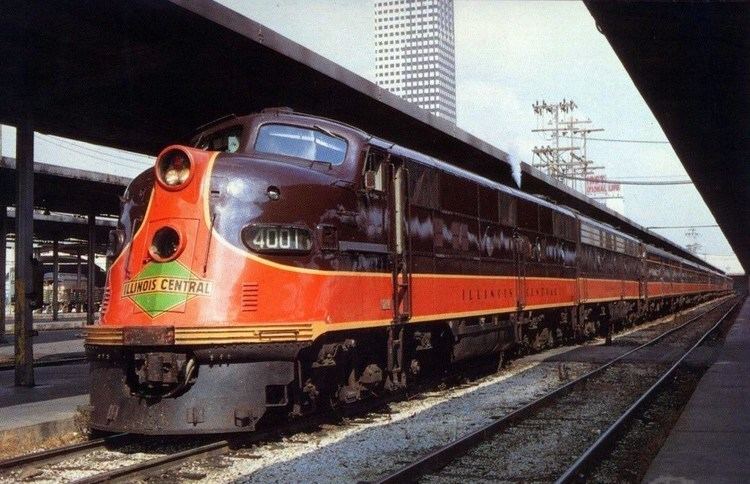
On September 10, 1995, the train was rerouted between Memphis and Jackson due to the Illinois Central Railroad's desire to abandon the original route (the Grenada District) in favor of the newer and flatter Yazoo District. Service ended at Batesville, Mississippi; Grenada, Mississippi; Winona, Mississippi; Durant, Mississippi and Canton, Mississippi.
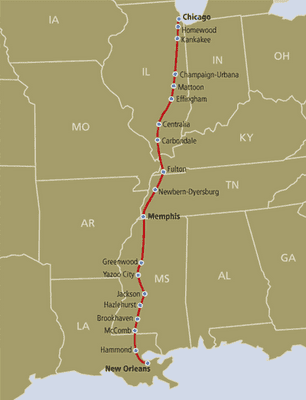
On March 15, 1999, the City of New Orleans collided with a flatbed semi-trailer near Bourbonnais. Of the 217 people aboard the train, eleven people were killed in the Bourbonnais train accident. The fourth car, where the fatalities occurred, was engulfed in flames following the collision at the crossing.

Because of damage to the states of Mississippi and Louisiana due to Hurricane Katrina, Amtrak was forced in late August 2005 to cancel service south of Memphis, Tennessee. Service was first restored as far south as Hammond, Louisiana, and on October 8, 2005, Amtrak resumed service to New Orleans. In December 2005 Arlo Guthrie, who helped popularize the song "City of New Orleans", led a fundraiser aboard the City of New Orleans and at several stops along the train's route to help in the hurricane recovery efforts.

In 2016, Amtrak released a study on bringing passenger rail to the Gulf Coast that recommended extending the City of New Orleans to Orlando, Florida along trackage once traversed by the Sunset Limited but unserved since Hurricane Katrina.
Route details
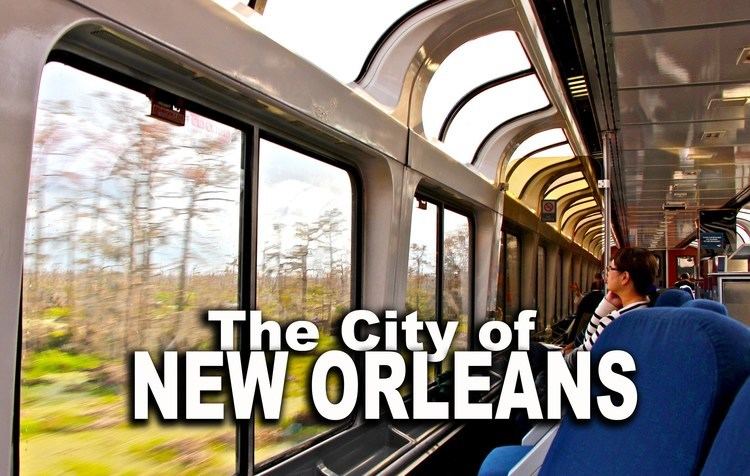
Upon Amtrak's creation in 1971, the City of New Orleans was one of four trains that called at Chicago's Central Station, which was originally Illinois Central's terminal in Chicago. All Amtrak trains were consolidated to Union Station by March 1972.
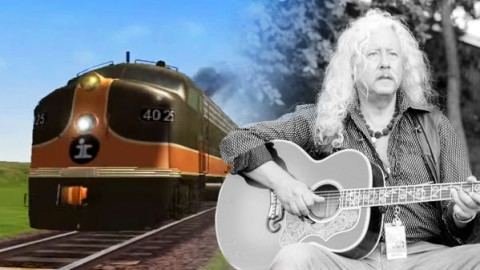
The tracks used were once part of the Illinois Central Railroad system, and are now owned by the CN. The following lines are used:
In fiscal year 2004, the City of New Orleans achieved an on-time performance rating of 67.6%. The train's average on-time performance rating for fiscal year 2006 was 86.8%, reaching as high as 93.5% for the month of May 2006.
While suggestions have been made to extend the City of New Orleans service east from New Orleans to Orlando, Florida, Amtrak has made formal proposals to do so.
Folk song
"City of New Orleans" is a folk music song written and first performed by Steve Goodman in 1970 and subsequently recorded by Arlo Guthrie in 1972 and many other artists, notably Willie Nelson, Johnny Cash, John Denver (with slightly different lyrics), Judy Collins, and Jerry Reed. The song lyrics trace the trail of the train route in mourning the "...disappearin' railroad blues...." Tom Rush performed and recorded a folk song (based on some Bukka White songs) about the Panama Limited, the overnight train along the same route as the City of New Orleans.
